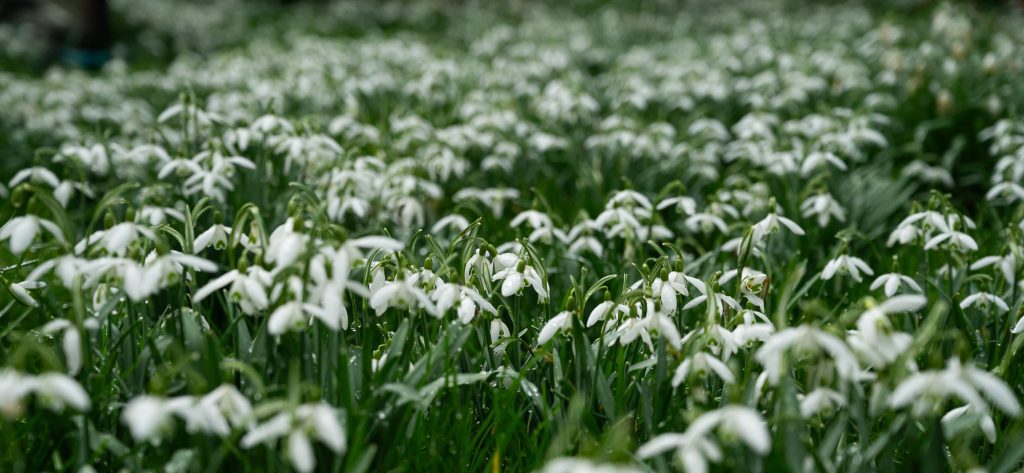Popular Science asked us about Fire Starters
Whether building a fire outdoors or starting one in your wood oven or fireplace, a fire starter makes it easy to get a small flame…

9th February 2024
I personally love snowdrops (Galanthus nivalis), they are one of the first flowers of the year in Wales and their white bell-shaped flowers nod in the slightest breeze. Although not classed as native here in the UK, they are certainly naturalised and are a good, early source of nectar for pollinators. We have a patchwork covering the floor of our orchard and every year the first green sprouts emerge underneath our most gnarled old apple tree signifying the beginning of the end of winter. To many people the humble snowdrop is a sign of rebirth and overcoming obstacles in life, perhaps because of the difficulties they overcome in their short flowering period.
As I go about my daily checks on the garden, taking a mental note of damage caused by storms, ice, snow etc. it always amazes me how resilient plants can be. We’ve had plum tree branches join back together with a little extra support; perennial kale bouncing back from an epic onslaught of caterpillars; and one mock orange which appeared dead for a year before putting out more new shoots than a well-manured strawberry plant. None of these quite match up to the annual onslaught which snowdrops face down with apparent ease.
Snowdrops are a lot tougher than they appear, their delicate leaves have hardened tips which allow them to push up through semi-frozen ground (this is a great thing to investigate for yourself next time you see them just starting to show above ground) The cells of the plant also contain antifreeze proteins; these protect the cells from ice crystals which would otherwise cause cells to burst with every hard frost and eventually kill the plant. Instead the leaves and stems of snowdrops will just droop over in freezing temperatures, only to revive into their usual upright position once things have warmed back up again, appearing completely unscathed.
A problem for all early flowering plants is how to keep pollen dry in rainy and humid conditions, pollen attracts insects most effectively when it is dry, and more insect visits means a better chance of pollination and seed formation. Snowdrops are one of several plant species with heat reactive flowers which help to keep the pollen dry. More specifically, they have tepals which are thermotropic, meaning that they move when the temperature hits a certain temperature. This feature keeps the flowers closed up when temperatures are below 10 degrees Celsius, protecting the pollen from the likely wintery showers; once the temperature is over 10 degrees Celsius the tepals open up and orient slightly more upwards to allow for easier access by pollinating insects, which are also more likely to be active in warmer temperatures. Even with this adaptation, pollination rates are significantly lower for winter and early spring flowering plants and many, such as snowdrops, wild garlic and bluebells rely more heavily on spreading through bulb division.
Although it may seem as though a lot of adaptation has had to take place in order to flower at a sub-optimal time of year, there is a reason behind it all. The toughening up of Snowdrops allows them to put up leaves and flowers when there are few other plants in leaf or flower; this means that there is less competition for light, nutrients and (believe it or not) pollinators. So next time you see a group of Snowdrops flattened by frost, don’t worry about it, they’ll soon perk up thanks to those excellent little proteins.
With over a decade of experience working outside in the UK doing everything from dry stone walling to tree planting and carrying out wildlife surveys. Amy is our resident ecologist and wild food enthusiast, and also works as a consultant for various brands and wildlife organisations. Amy lives in North Wales.
A Life More Wild is the philosophy which underpins everything we do.
It encompasses practical skills, personal development, community learning and a journey to live more intentionally.
Whether building a fire outdoors or starting one in your wood oven or fireplace, a fire starter makes it easy to get a small flame…
In Tips From An Instructor we share useful snippets of knowledge to make outdoor skills that little bit easier. In this episode Richard explains why…
If you plan on transplanting snowdrops from one location into another, the best time of year to do this is as the leaves are fading…
Snowdrops are a beautiful, with their nodding white bell shaped flowers which secret away the intricately green lined centre underneath.
